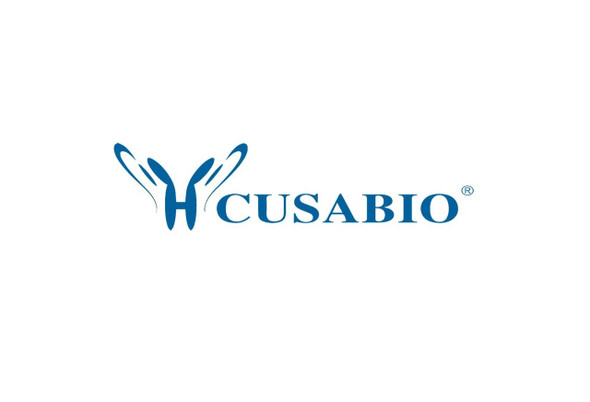Cusabio Human Recombinants
Recombinant Human Chemokine-like receptor 1 (CMKLR1) | CSB-CF005614HU
- SKU:
- CSB-CF005614HU
- Availability:
- 3 - 7 Working Days
Description
Recombinant Human Chemokine-like receptor 1 (CMKLR1) | CSB-CF005614HU | Cusabio
Alternative Name(s): Chemokine-like receptor 1(G-protein coupled receptor ChemR23)(G-protein coupled receptor DEZ)
Gene Names: CMKLR1
Research Areas: Cell Biology
Organism: Homo sapiens (Human)
AA Sequence: MRMEDEDYNTSISYGDEYPDYLDSIVVLEDLSPLEARVTRIFLVVVYSIVCFLGILGNGLVIIIATFKMKKTVNMVWFLNLAVADFLFNVFLPIHITYAAMDYHWVFGTAMCKISNFLLIHNMFTSVFLLTIISSDRCISVLLPVWSQNHRSVRLAYMACMVIWVLAFFLSSPSLVFRDTANLHGKISCFNNFSLSTPGSSSWPTHSQMDPVGYSRHMVVTVTRFLCGFLVPVLIITACYLTIVCKLQRNRLAKTKKPFKIIVTIIITFFLCWCPYHTLNLLELHHTAMPGSVFSLGLPLATALAIANSCMNPILYVFMGQDFKKFKVALFSRLVNALSEDTGHSSYPSHRSFTKMSSMNERTSMNERETGML
Source: in vitro E.coli expression system
Tag Info: N-terminal 10xHis-tagged
Expression Region: 1-373aa
Sequence Info: Full Length
MW: 45.1 kDa
Purity: Greater than 85% as determined by SDS-PAGE.
Relevance: Receptor for the chemoattractant adipokine chemerin/RARRES2 and for the omega-3 fatty acid derived molecule resolvin E1. Interaction with RARRES2 induces activation of intracellular signaling molecules, such as SKY, MAPK1/3 (ERK1/2), MAPK14/P38MAPK and PI3K leading to multifunctional effects, like, reduction of immune responses, enhancing of adipogenesis and angionesis. Resolvin E1 down-regulates cytokine production in macrophages by reducing the activation of MAPK1/3 (ERK1/2) and NF-kappa-B. Positively regulates adipogenesis and adipocyte metabolism. Acts as a coreceptor for several SIV strains (SIVMAC316, SIVMAC239, SIVMACL7E-FR and SIVSM62A), as well as a primary HIV-1 strain (92UG024-2).
Reference: "Identification of chemerin receptor (ChemR23) in human endothelial cells: chemerin-induced endothelial angiogenesis." Kaur J., Adya R., Tan B.K., Chen J., Randeva H.S. Biochem. Biophys. Res. Commun. 391:1762-1768(2010)
Storage: The shelf life is related to many factors, storage state, buffer ingredients, storage temperature and the stability of the protein itself. Generally, the shelf life of liquid form is 6 months at -20?/-80?. The shelf life of lyophilized form is 12 months at -20?/-80?.
Notes: Repeated freezing and thawing is not recommended. Store working aliquots at 4? for up to one week.
Function:
Involvement in disease:
Subcellular Location:
Protein Families:
Tissue Specificity:
Paythway:
Form: Liquid or Lyophilized powder
Buffer: If the delivery form is liquid, the default storage buffer is Tris/PBS-based buffer, 5%-50% glycerol. If the delivery form is lyophilized powder, the buffer before lyophilization is Tris/PBS-based buffer, 6% Trehalose, pH 8.0.
Reconstitution: We recommend that this vial be briefly centrifuged prior to opening to bring the contents to the bottom. Please reconstitute protein in deionized sterile water to a concentration of 0.1-1.0 mg/mL.We recommend to add 5-50% of glycerol (final concentration) and aliquot for long-term storage at -20?/-80?. Our default final concentration of glycerol is 50%. Customers could use it as reference.
Uniprot ID: Q99788
HGNC Database Link: N/A
UniGene Database Link: N/A
KEGG Database Link: N/A
STRING Database Link: N/A
OMIM Database Link: N/A






